How and what is the best way to feed chickens and what the diet should depend on
One of the rules for caring for chickens is the competent development of a diet with a balanced content of micro and macro elements. Regular feeding of nutritious food increases productivity and egg production. The article tells about the best way to feed the chickens, about the rules for compiling the menu and the choice of feed.
Basic rules for feeding chickens
In order to achieve high productivity of chickens, it is necessary to create appropriate housing conditions and ensure balanced feeding. When developing a diet, some features should be taken into account:
- you need to serve food at the same hours to develop a regime;
- on the menu include combination feeds and different foods to increase nutritional value;
- when choosing ingredients, the main focus is on green grass, grain and root crops;
- birds need to provide free access to water (it is recommended to fill drinkers daily);
- overeating and malnutrition should not be allowed, from this the chickens stop rushing.
The diet of adult birds is 2 times a day, young animals are fed 3-4 times a day. In the morning, the feeders are filled with a mash, and in the evening, the livestock are fed with grain. Between the main meals, the herd is released to graze to graze the grasses, to get worms.
Reference! It is not necessary to fill the feeders to the edges of the rim, the chickens will trample a third of the mash or grain. A level of 2/3 of the total volume will be just right.
Throughout the year, the herd is fed with fresh root crops. Favorite treats include:
- fodder beets;
- potato;
- cabbage;
- zucchini;
- pumpkin and other garden crops.
In the warm season, fresh herbs are included in the diet. It enriches the body of birds with valuable microelements, strengthens the protective functions.
Types of feed for chickens
Regardless of the size of the farm, feed is procured in any season. They come in different types.
Compound feed
Nutrient mixture, which is made from garden crops, grain, vitamin supplements. This option provides a complete, balanced feeding. It is available to prepare it yourself using the following ingredients:
- cake;
- soy;
- grain of different varieties;
- vegetable fats;
- calcium carbonate;
- vitamins.
Finished products are produced in granules and friable. The only drawback of this feed is its high cost.
Herbs
It is mown to replenish stocks and is given fresh. This juicy delicacy is full of useful substances. The presence of greens in the diet has a beneficial effect on egg production, chicken immunity. The following crops are suitable for consumption: alfalfa, plantain, nettle, sweet clover, sorrel, etc.
This category includes tops from the garden, vegetable and fruit peelings, wilted greens, cabbage leaves, apples, lettuce, etc.
Homemade food
This category includes garden and horticultural crops grown on the farm. These are roots and vegetables, fruits. Birds love:
- carrot;
- beet;
- pumpkin;
- zucchini;
- turnip;
- watermelon.
Birds peck at carrion from fruit trees: cherries, apricots, plums, apples and other fruits.
Household food is also considered food waste, food processing leftovers, stale food, and bread leftovers. Fermented food should not be given to birds, it can provoke poisoning.
What is the best way to feed your hens
When feeding laying hens a special diet enriched with trace elements and minerals is selected. The productivity of the eggs, the parameters and weight of the egg, and the density of the calcium shell depend on the balance of the menu.
In the morning, hens are offered a liquid mash. Its composition includes: boiled potatoes, bone meal, ground grain. You can also mix in crushed shells, salt and waste from the kitchen. In the evening, the birds are fed immediately before bedtime. Whole grains are used as the main course.
Reference! Some poultry farmers make a mixture of grain (combine oats, corn, wheat, millet, etc.). Experienced farmers advise against doing this. Well-fed chickens choose only their favorite delicacy, and the rest is trampled into the bedding or the floor. For a variety of menus, it is suggested to rotate grain crops every day.
The daily feed rates indicated in various sources are based on the average weight of the chicken. Therefore, it is necessary to take into account the characteristics of their layers, their addiction to this or that feed. For example, a laying hen weighing 1.8 kg and egg productivity up to 100 pcs. 125 g of feed per day is required per year. For every 250 g weight gain, the daily food intake is increased by 10 g.
Example diets
Grain mixtures enrich the body of birds with fiber, vitamins, carbohydrates. Therefore, they are put as the basis of the diet. Feed stocks include the following grades:
- barley is a source of mineral components involved in food digestion and egg production;
- wheat - saturates birds with energy, increases productivity, has a beneficial effect on the work of all organs (wheat in the total grain supply should be at least 50%);
- millet - increases egg production, hardens the shell;
- rye is a storehouse of vitamins and proteins;
- corn - it is offered in crushed form, due to its high fat content, it is given in small portions and infrequently;
- oats - promotes the growth of feathers, weight gain.
Cereals lack fat, calcium and other nutrients. Therefore, the diet is enriched with additives.
- Compound feed - made on the basis of crushed dry root crops, greens, crushed grain. The combinations of ingredients are very different. The composition is available ready-to-use. In the presence of a large farm, the preparation of compound feed is carried out from those crops that are grown in their own garden and in the fields.
- Garden crops - they are boiled or used raw. Mandatory heat treatment applies only to potatoes. Boiled vegetables are combined with bone meal or chopped, and served to the chickens in the form of a mash.
- Greens - This term includes freshly cut grass. This food is juicy and rich in vitamin composition. Greens affect the productivity of eggs, shell density, and the functioning of the digestive system. It is not necessary to harvest it, it is enough to allocate a place for walking the birds.
From the listed blanks, approximately the following ration is made.
1st day:
- morning - a mash of vegetables and wheat;
- lunch - greens;
- afternoon tea - corn;
- evening - millet.
2nd day:
- morning - a mash of porridge, cottage cheese and food waste;
- lunch - greens or hay;
- afternoon tea - grated vegetables;
- evening - wheat.
3rd day:
- morning - a mash of boiled potatoes, skimmed milk, bran and shell rock;
- lunch - greens;
- afternoon tea - sunflower cake;
- evening - steamed oats.
What grain is better to feed
Small farms cannot completely switch to feeding the herd with ready-made compound feed. Therefore, they replenish the diet with grain of different types. For chickens to fly better and gain weight quickly, you need to combine wheat with barley and rye.
Corn is introduced into the menu in small portions with a mode of use 1-2 times a week. Most often it can be given in winter when the bird needs more fat.
Oats are served 3-4 times a week, but steamed or sprouted. So the grain is better absorbed by the digestive system of chickens.
Wheat can be offered to poultry daily.In the total volume of the daily menu, it sometimes reaches 60%. But do not limit yourself to the meager menu, the birds quickly become saturated with their favorite delicacy, after which they begin to show fastidiousness in feeding.
How to make a chicken mash
The ingredients are selected according to the season. In winter, vitamin supplements must be added; in summer, the diet is replenished with fresh herbs and vegetables.
Step-by-step instruction:
- boil peels or pieces of vegetables, other food waste;
- dilute mineral additives, salt, premixes in pure water;
- add bran, grain or other dry ingredients to the mineral solution, leave to infuse for 20-30 minutes;
- chop the boiled vegetables on a coarse grater, introduce the resulting mass into a container with bran;
- mix all components thoroughly.
The mash will only have to be laid out in the feeders. Root crops must be cleaned of the earth by rinsing under running water. Beets are additionally cut off the rhizome.
Summer version of the mash
In order to increase the egg production of chickens, such a recipe is used.
- Boiled vegetables - 400 g.
- Grain corn - 200 g.
- Chopped greens - 100 g.
- Sunflower meal - 100 g.
- Crushed peas - 100 g.
- Barley grain (crushed) - 250 g.
- Meat and bone meal - 50 g.
- Crushed shell rock - 20 g.
- Oat bran -180 g.
- Water - 600 ml.
The total volume is 2 kg. It is enough for the morning feeding of the livestock from 18 to 25 layers. But this cannot be called the norm, in each farm the volume is calculated individually.
Reference! If the birds eat the mash in less than 20 minutes, increase the amount of ingredients. The remaining feed indicates surplus, the portion is reduced in proportion to the amount of residues.
A vitamin complex is added to the liquid mixture. In the warm season, this should be done once a month.
Winter option
- Herbal flour - 50 g.
- Boiled vegetables - 300 g.
- Corn grain (crushed) - 500 g.
- Fish oil - 15 g.
- Whole grain barley - 300 g.
- Shredded shell rock - 15 g.
- Sunflower cake - 70 g.
- Meat and bone flour - 150 g.
- Water - 600 ml.
In feed 1-2 p. salt (10 g) should be added per week. A common food product is used without third-party impurities. This component drives away the parasites that live inside the intestines.
Experienced poultry farmers recommend giving less potato skins to the birds in winter, adding more beets and carrots to the mash. With long-term storage of potatoes in the skin, the concentration of hydrocyanic acid increases. It can provoke poisoning.
How to feed chickens for good growth
To accelerate weight gain, it is recommended to include legumes in the menu. They are the best source of protein and a whole range of amino acids for poultry. You can use peas, beans, beans. They are pre-soaked for 2 hours in cold water. You need to cook for 20-30 minutes on low heat. Cooked beans are easier for the body to digest and have a beneficial effect on the digestion of all food in the stomach.
Products also contribute to the rapid growth of poultry: sour milk, cottage cheese and other dairy waste. It is recommended to use chopped needles as greens. It not only strengthens the protective functions of the body, but also restores metabolic processes. The daily rate for one head is 3-10 g.
To increase the productivity of meat, the menu includes:
- flour from meat processing industry waste;
- fish and meat waste from home cooking;
- earthworms;
- surplus gardening (in moderation).
To rush better
It is quite difficult to balance the diet in the off-season and winter period. Therefore, experts recommend relying on compound feed. Thanks to nutritious food, chickens rush until December or even January.
If the combination feed is not affordable for everyone, other options for feeding the birds can be dispensed with. To do this, you need to sketch on a piece of paper an approximate menu for several days.Then it remains to prepare the components, and alternate the days at your discretion.
The daily portion of the feed should contain whole grains, herbs, flour, mineral and vitamin supplements.
Reference! Access to water and mineral fertilizing is made free. As a top dressing, the birds are given chalk, sand or shell rock. Chickens are also showing interest in lime, which is due to the need to replenish the calcium supply.
When developing a diet, you should alternate green and protein supplements, types of flour and grains. The main mistake of novice poultry farmers is the monotony of feed, against which a deficiency of vitamins and minerals develops.
What should not be given to chickens
Chickens are unpretentious to food, they peck on almost everything that comes along the way. Unhealthy food causes indigestion and other more serious illnesses. The following foods can harm birds:
- fermented food (it is not necessary to fill the feeders to the refusal, it is better to add additives to the chickens);
- fresh bread (after getting into the stomach, it swells and sticks together, which can lead to the death of the bird);
- grain with signs of rottenness (such food clogs up in the goiter, provokes the development of infection);
- poisonous plants, after eating which poisoning is obtained (among dangerous herbs: wormwood, celandine, horsetail);
- bakery products with mold (the fungus affects the body of chickens, it is quite difficult to cope with the infection);
- potatoes with herbs, sprouted or raw (eating such food is fraught with disruption of the functioning of the digestive system);
- salty food and sweets (difficult to digest, provoke fermentation in the stomach).
Don't ignore prohibitions. The productivity of the bird and the health of the entire herd depend on the quality of feeding.
Frequency and volume of feedings
After drawing up the diet, it is important to think about the feeding schedule and volumes. For the normal development of birds, a two-time feeding trough with food per day is suitable. It is better to do this in the morning after the birds wake up and in the evening before bedtime. At the same time, it is important to provide for free range so that the birds can find additional food in the courtyard.
To increase egg production, it is recommended to double the amount of food served up to 3-4 times a day. In the early morning they give grain food, then a mash, then pieces of vegetables. Hang up the day with grain feed. The feeding regimen is built so that there are equal intervals of time between meals.
In winter, mash is prepared on the basis of warm water. When buying feed, preference is given to quality products. The health of the herd and the rate of productivity depend on this.
Mode at different times of the year
The summer menu should be compiled taking into account the daily norms for one chicken:
- hay - 10 g;
- grain - 50 g;
- solid vegetable feed - 30-50 g;
- protein components - 10 g;
- flour mixture - 50 g;
- bone meal - 2 g;
- mineral additives and salt - 5.5 g.
In winter, the daily rate is:
- mash - 30 g;
- grain - 50 g;
- squeeze from sunflower seeds, meal - 7 g;
- potatoes - 100 g;
- bone meal - 2 g;
- food salt and mineral dressings - 5.5 g;
- hay - 10 g;
- milk derivatives - 100 g.
Most of the listed components are contained in ready-made feed. Many manufacturers produce formulations specifically for laying hens. However, the transfer of food exclusively to dry food is considered unprofitable for many farms.
Vitamin Supplements
Due to the lack of vitamins, chickens do not gain weight well, layers stop laying. Therefore, in addition to vegetables and grain, the herd is fed with premixes and various additives. The mixtures are enriched with valuable trace elements that strengthen the immune system, stimulate metabolic processes.
Reference! Vitamins are also needed to increase egg production, egg mass, and thicken the outer shell.
It is possible to fill the lack of micro and macronutrients by using multivitamins. The composition of such mixtures is thought out to the smallest detail, taking into account the characteristics of the bird's body. The range of modern vitamin supplements is impressive.This makes it possible to choose the most suitable complex for layers or chickens raised for meat. Among the offers on the market, the following products deserve attention:
- Trivit;
- Undevit;
- Chiktonik.
Mixing one of the listed complexes into the feed provides reliable protection against vitamin deficiency. Strengthening the immune system is achieved, increasing resistance to viruses and harmful bacteria.
The following are also used as a source of vitamins:
- fish fat;
- live yeast;
- sprouted wheat grains;
- meat and bone and fish meal.
Vitamin supplements are especially important for chickens in winter, during illness. The weakened body is enriched with valuable substances that take part in all physiological processes.
The scheme for using vitamin complexes should correspond to the age of the chickens. You can find out about this from the instructions that come with each product. It is prohibited to set the rate at your own discretion, the bird can only be harmed.
Video about making a diet for chickens:



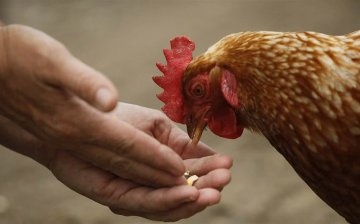
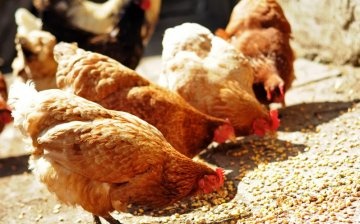




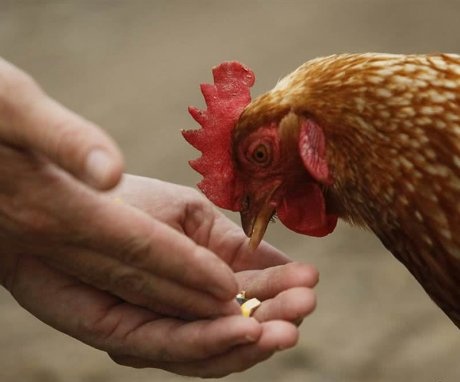
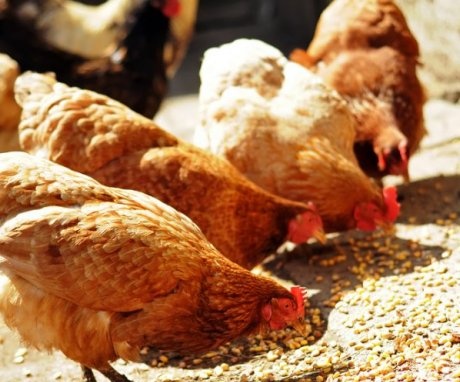
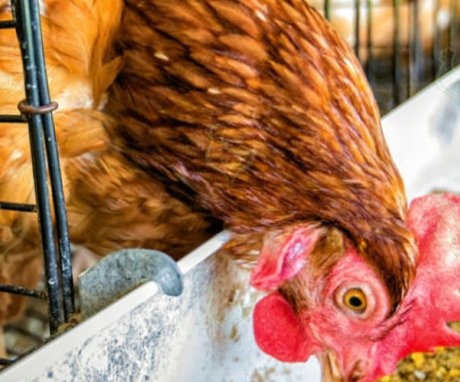
I started chickens not very long ago, because I still think that there is enough trouble with them. I feed it approximately as described in the article. I buy mixed feed, and I cook everything else - herbs, vegetables. For a beautiful yolk, I add more orange vegetables and turmeric to the diet.
In general, the diet for feeding chickens has always been relatively stable - cereals and grass, they do not disdain expired cereals, slightly spoiled vegetables and fruits, in winter, of course, we have to resort to ready-made vitamin supplements.